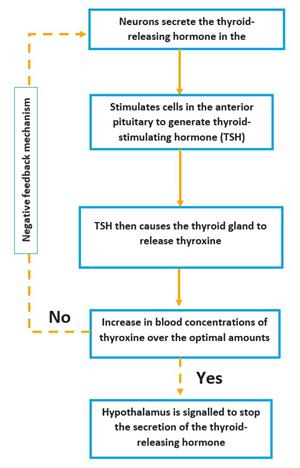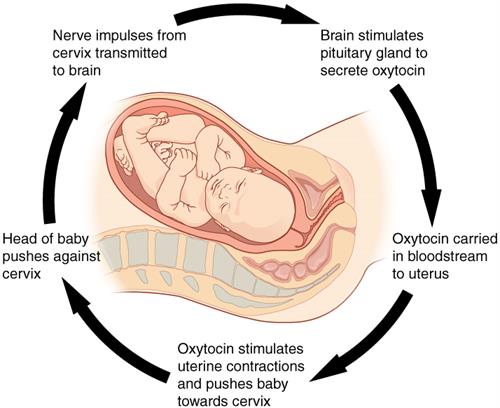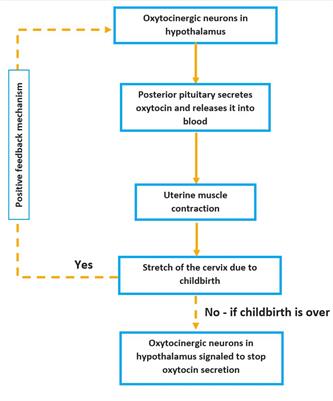
PUMPA - SMART LEARNING
எங்கள் ஆசிரியர்களுடன் 1-ஆன்-1 ஆலோசனை நேரத்தைப் பெறுங்கள். டாப்பர் ஆவதற்கு நாங்கள் பயிற்சி அளிப்போம்
Book Free DemoIf a hormone's concentration in the circulatory system is kept within normal limits, it can work efficiently.
Deviation from the typical range has a significant impact on the body. Chemical stimuli trigger hormone secretion, and the hormone itself can stop hormone secretion.
The hormone feedback mechanism is the mechanism that keeps the hormone balance in the blood/body in balance.
An increase or decrease in the concentration of a hormone can occasionally stimulate and increase the hormone's release or inhibit the hormone's secretion. It's known as feedback.
The endocrine system relies on feedback mechanisms to regulate hormone production and secretion.
Negative feedback mechanism

Negative feedback mechanism of TSH

Flowchart of negative feedback mechanism of TSH
- Negative feedback is the primary regulator of hormone production and release.
- A stimulation in a negative feedback system causes the release of a substance, the effects of which then prevent future release.
- The concentration of hormones in the blood is thus kept within a narrow range.
The majority of endocrine glands are controlled by negative feedback to maintain homoeostasis or avoid deviation from an ideal value.
The regulation of the thyroid hormone thyroxine, which governs multiple essential metabolic processes, is an excellent example of a negative feedback system.
The regulation of the thyroid hormone thyroxine, which governs multiple essential metabolic processes, is an excellent example of a negative feedback system.
Neurons secrete the thyroid-releasing hormone in the hypothalamus. This hormone stimulates cells in the anterior pituitary to generate thyroid-stimulating hormone. The thyroid-stimulating hormone then causes the thyroid gland to release thyroxine.
At first, the sensory neurons sense the increase in blood concentrations of thyroxine over the optimal amounts. Then, the hypothalamus is signalled to stop the secretion of the thyroid-releasing hormone.
This stoppage will lower thyroxine levels in the blood. The hypothalamus is signalled to start secreting thyroid-releasing hormone again when they drop below the optimal value.
Positive feedback mechanism

Positive feedback mechanism of childbirth by Oxytocin

Positive feedback mechanism of Oxytocin
The positive feedback stimulates the secretion or production of the hormone. Positive feedback is considered insignificant to maintain homeostatic functioning, in contrast to negative feedback, which keeps hormone levels within limited ranges. A good example is when a child is born.
The posterior pituitary produces the hormone oxytocin, which promotes and increases contractions during labour. Pressure receptors in the cervix signal the hypothalamus to activate the pituitary to secrete oxytocin as the infant passes through the birth canal.
Oxytocin travels through the bloodstream to the uterus, stimulating the contraction of the uterine wall muscles, which increases the activation of the pressure receptors and encourages more oxytocin release.
Muscle contractions become stronger until the baby is born. After the baby is born, the stimulation of the pressure receptors is removed, stopping the production of oxytocin.

Positive and negative feedback mechanism to maintain the blood sugar by insulin and glucagon
Reference:
https://upload.wikimedia.org/wikipedia/commons/thumb/5/52/1813_A_Classic_Negative_Feedback_Loop.jpg/1024px-1813_A_Classic_Negative_Feedback_Loop.jpg
https://upload.wikimedia.org/wikipedia/commons/9/9a/106_Pregnancy-Positive_Feedback.jpg
https://upload.wikimedia.org/wikipedia/commons/d/d5/Negative_Feedback_Gif.gif